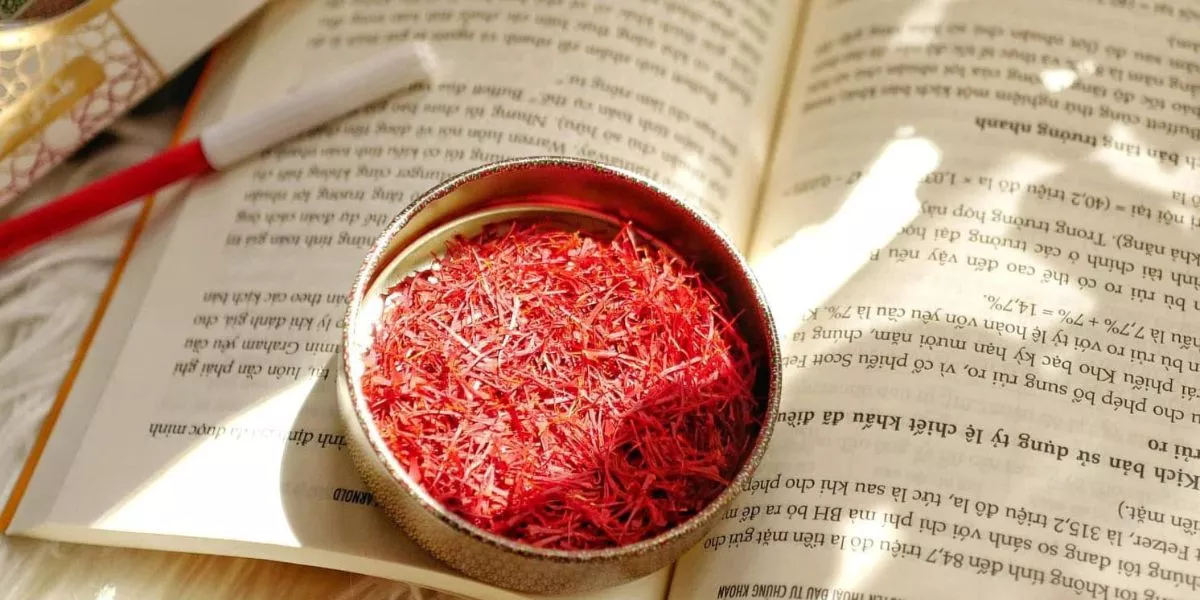
In saffron books, you'll uncover a treasure trove of knowledge about this ancient spice that transcends mere flavoring. From its enigmatic beginnings in distant lands to its role in shaping cultures and cuisines, saffron's story is as intricate as its crimson threads. Each turn of the page reveals not just its taste, but also the hidden layers of history, tradition, and even mystique that surround this rare and revered ingredient. So, prepare to embark on a journey where every anecdote and fact about saffron unveils a deeper understanding of its allure and significance throughout the ages.
Origins and History of Saffron
If you're curious about where saffron comes from and how it has shaped history, you're in for a fascinating journey into the origins and history of this ancient spice. Saffron, known as 'red gold,' has a rich history dating back over 3,500 years. Originating in the Mediterranean region, saffron was highly prized by ancient civilizations like the Greeks, Egyptians, and Romans for its distinct flavor and vibrant color. These civilizations not only used saffron in culinary dishes but also for medicinal and religious purposes.
The cultivation of saffron spread across the world, with countries like Iran, India, and Spain becoming renowned for producing high-quality saffron. Throughout history, saffron has been a symbol of wealth, luxury, and prestige, often reserved for royalty and nobility. Its labor-intensive harvesting process, where each delicate stigma is handpicked, contributes to its high value.
As you delve deeper into the origins and history of saffron, you'll uncover a spice that has left a lasting impact on cultures, cuisines, and economies worldwide.
Medicinal Properties and Health Benefits
Exploring the medicinal properties and health benefits of saffron reveals a treasure trove of ancient wisdom and modern scientific discoveries. Saffron, known for its vibrant color and unique flavor, has also been valued for its potential health-promoting properties. This ancient spice is rich in antioxidants, which help protect the body from damage caused by free radicals and oxidative stress. Studies suggest that saffron may have anti-inflammatory effects, aiding in conditions like arthritis and other inflammatory disorders.
Moreover, saffron has been linked to potential mood-boosting effects and may help alleviate symptoms of depression and anxiety. The spice is believed to enhance the production of neurotransmitters like serotonin, which play a crucial role in regulating mood. Additionally, saffron is being researched for its potential benefits in improving memory and cognitive function.
With its long history of medicinal use and promising scientific research, saffron continues to captivate researchers and health enthusiasts alike. Incorporating this precious spice into your diet may not only add a burst of flavor but also offer a range of potential health benefits.
Culinary Uses and Recipes
Discover delicious ways to incorporate saffron into your culinary creations and explore tantalizing recipes that showcase the versatility of this ancient spice. Saffron, with its unique flavor profile and vibrant color, can elevate dishes to a whole new level. You can add a pinch of saffron threads to your rice dishes for a fragrant and visually stunning presentation. Try infusing saffron into warm milk for a comforting saffron-infused beverage that's perfect for a cozy night in.
For a savory twist, include saffron in your seafood dishes like paella or bouillabaisse to impart a rich and aromatic taste. Saffron also pairs wonderfully with chicken, creating a flavorful and aromatic marinade for grilled chicken skewers or a hearty saffron-infused chicken stew.
When it comes to desserts, saffron can add a touch of luxury to your sweet treats. Indulge in saffron-infused ice cream, creamy saffron rice pudding, or decadent saffron-infused cakes for a truly special culinary experience. Experiment with saffron in your cooking, and unlock the endless possibilities this ancient spice has to offer.
Cultural Significance and Traditions
Delve into the cultural significance and traditions surrounding saffron to gain a deeper appreciation for this ancient spice. Saffron holds a special place in various cultures worldwide, symbolizing different meanings and traditions. In Persian culture, saffron has been used for centuries not only in culinary dishes but also in rituals and ceremonies, representing joy, vitality, and the sun's warmth. The vibrant red threads of saffron are also a common sight in Indian culture, where it's used in religious ceremonies, traditional medicines, and even as a dye for clothing.
Furthermore, saffron plays a crucial role in Spanish culture, particularly in the region of La Mancha, where the cultivation of saffron threads is a time-honored tradition passed down through generations. The annual saffron harvest in this region brings communities together to celebrate the precious spice through music, dance, and feasting. In Morocco, saffron holds a place of pride in both culinary dishes and traditional rituals, adding a rich, aromatic flavor to tagines and teas while also being used in beauty treatments and spiritual practices. Understanding these cultural connections to saffron enhances its value beyond its culinary uses, offering a glimpse into the deep-rooted traditions and significance attached to this precious spice.




